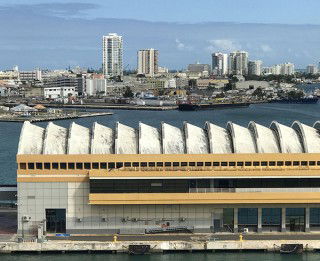Vietnam’s Party General Secretary Nong Duc Manh has expressed his hope that the cement industry will work out an effective scientific action programme to develop rapidly and sustainably.He told the Viet Nam Cement Corporation (VNCC) in Ha Noi on Friday that the corporation should accelerate its investment by mobilising capital from its nine affiliated companies and other sources to build more cement plants. "Investing in developing the cement industry is an urgent requirement," he said, affirming that cement is one of the most important strategic materials of the national economy. The Party leader praised the VNCC’s increases in cement output, revenues, profits and remittances to the State budget. He also spoke highly of the corporation’s stabilisation of cement prices in the recent past, thus creating favourable conditions for construction investment.
The VNCC sold more than 2.5Mt of cement in the first quarter of this year or a year-on-year increase of 10 per cent. Almost all companies saw an increased cement consumption. For instance, Hoang Thach Cement Company enjoyed a rise of 27 per cent, Bim Son Cement Company, 30 per cent and Da Nang Construction Material Company, 32 per cent. The growth was entirely due to the demand for cement in the month of March, especially in the north.
Extensive delays in building cement plants could see Vietnam continuing to rely on millions of tonnes of imported materials for the next few years, said Tong Van Nga, deputy minister of construction. Construction on all cement plants is running between one and two years behind schedule, blocked by disagreements in bidding and delays in purchasing equipment, according to a report by the Ministry of Construction. The result, Nga noted, is a serious shortage between stagnant production levels and increasing domestic demand.
This year Vietnam will import 2 to 2.5Mt of clinker, which is cement’s main component, according to Nguyen Anh Tuan, an official from the Viet Nam Cement Corporation. Imports for 2003 were about 2Mt, according to the corporation, though the Ministry of Construction puts the number closer to 3Mt. And with domestic consumption rising by an estimated 12 per cent annually, imports will keep increasing until new plants have opened.
The US$208 million Hai Phong Cement Plant, for instance, if completed as expected in 2005, will open five years after originally planned, with annual output of 1.4 million tonnes. The $229 million Tam Diep plant has met with a similar fate, having been under construction for five years before its expected 2005 opening. Last year, the ministry and Viet Nam Cement Corporation planned to invest VND5.4 trillion ($360 million) in building factories, but only 40 per cent of the money was disbursed. Only a third of the VND1.5 trillion ($99 million) earmarked for the Central Construction Corporation’s Song Gianh project has been used, pushing back the plant’s projected opening next year. Several other projects the namely Hoang Thach 3, Binh Phuoc, But Son 2 and Ha Tien 2.2 plants face similar delays.
The chairman of the Construction Materials Association, Tran Van Huynh, said he is hopeful that most of the plants will start operating by 2005 and produce about 19mt each year. This still falls short of industry targets to produce 23Mt of cement per year by 2005 and 40 million tonnes by 2010, goals which could only be reached were more clinker-making factories to open. Nga puts the investment required to build the needed dozens of cement projects at $5.5 billion through 2020. In the meantime, the Ministry of Construction has asked the industry to pick up the pace of construction this year and has proposed the Government to assign several prestigious local corporations such as the Viet Nam Construction and Machinery Installation Corporation Lilama and Viet Nam Construction Import Export Corporation (Vinaconex) to undertake large-scale cement projects to ease current delays.
